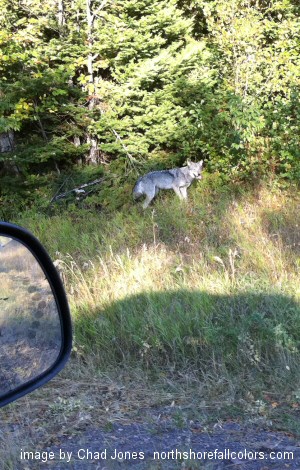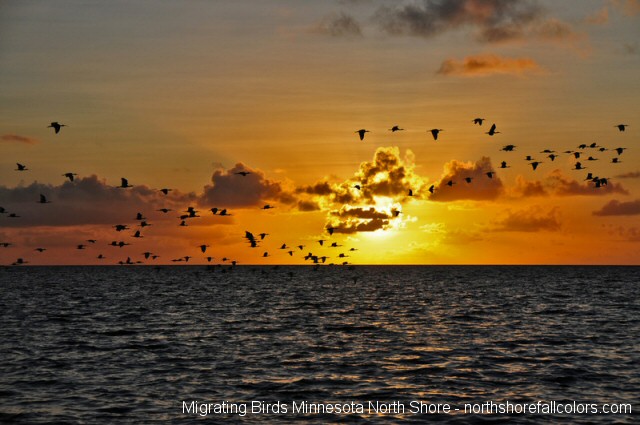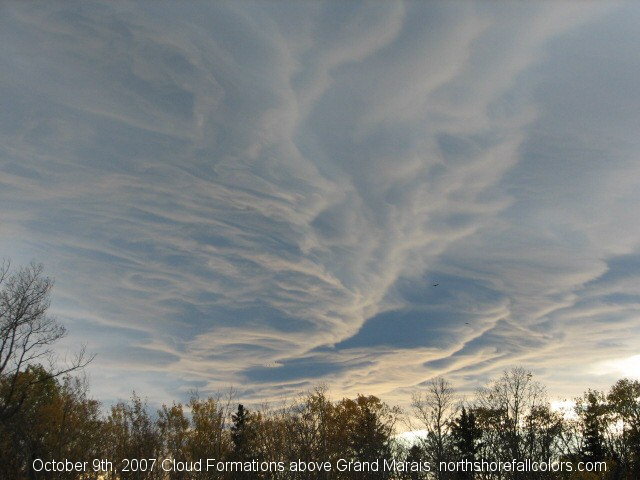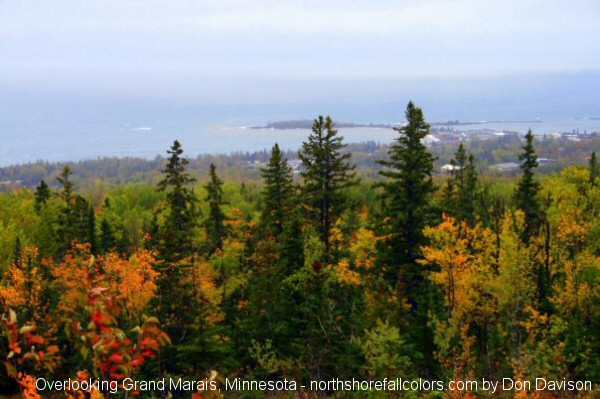North Shore Fall Colors! Fewer people,
cooler temps and things you don't see in the
cities. Large numbers of migrating birds: bald eagles, hawks, vultures and falcons. Great opportunities to see bold wolves on and along HWY 61.
>>Reports for September 28, 2023...
maples are fading on the upper north shore
and still holding on around the Duluth and
Two Harbors area. Birch and poplar turning
bright yellow Gunflint Trail and upper
shore. Birds are migrating down, waves of bluejays, kestrels, broadwings,
eagles and turkey
vultures are overhead.
Fall
Color Status: Generally fall colors are best for maple,
ash and oak from mid September into late September. Colors for birch and poplar / aspen are last two weeks of September into early October. Tamarack changes to lemon yellow at the end of October into November. We report fall colors
and bird migration into two areas; the lower North Shore and upper North Shore below.
LOWER NORTH SHORE - FALL COLOR REPORT HWY 61 MILE 0 TO MILE 71>>>Which is
Duluth
area up 71 miles through Little Marais, including Tettegouche State Park,
St. Louis and Lake Counties. Current
Report September 28 -
Maples are peaking in some area around
Duluth and Two Harbors. Try the
early season routes.
Migrating birds
are following the shoreline of Lake Superior
to end up in the funnel above Duluth, check
out why birds funnel up above Duluth at
Hawk Ridge
bird migration area now. Get out of the
car and hike!
Hike North Shore trails
and explore the area during the fall colors.
UPPER
NORTH SHORE - FALL COLOR REPORT HWY 61 MILE 71 TO USA / CANADA BORDER
>>>All of Cook County from the
Caribou River Wayside area and Schroeder,
Lutsen, Grand Marais up
through Grand Portage, Gunflint Trail and
the Canadian border area. Current
Report September 28 - Maples are fading
big time. Birch and poplar turning bright
yellow.
Try the
mid season routes or
late
season routes.
Hiking is awesome during fall colors.
Hike North Shore trails and explore the area.
Migrating birds
are following the shoreline of Lake Superior
to end up in the funnel above Duluth, check
out why birds funnel up above Duluth at
Hawk Ridge
bird migration area now. Get out of the
car and hike!
Hike North Shore trails
and explore the area during the fall colors.
Great opportunities exist for wolf, deer, and red fox watching at night. Bald eagles and ravens can be seen on road kill along Hwy 61 during the day.
|

|
Wolves in broad daylight eating a carcass at mile 116.5 Hwy 61 [see image to left]. More wolves have been seen past two weeks at night and during the day around Hwy 61 mile markers 114 to 118. Wolf sightings are on a sharp increase due to over population and lack of fear for humans. We sat and watched this wolf for ten minutes, rolling and chewing on a dead animal. Areas east of Grand Marais to the Brule River have been the hot spots again this fall. Between 9pm and midnight many wolves, red fox and deer on Hwy 61 between Grand Marais and Judge Magney State Park. Numerous road kill deer with eagles and wolves feeding can be seen along Hwy 61 in the fall.
Fall color routes
|
Wolves are also commonly seen on and along Hwy 61 in Cook County in the; Lutsen area, Cascade River State Park area, up and through downtown Grand Marais, Colvill, Kadunce River Wayside area, Judge Magney State Park and Hovland.
>>Keep these things in mind...
Watch for ticks... we've been finding very small deer ticks on dogs and people. Hard to believe but, deer ticks are very active during the warm fall days and often attach in the very private body areas. Deer ticks are a recent invasive species that have moved into North Shore areas, possibly from excessive deer populations. (might be a good place to find an area to deer hunt.)
Please be courteous to those that don't want to drive as slow as you. Turn-out in a safe location and let faster traffic pass. Not everyone is leaf looking. People live and work here too. Thank you!
See fall color images of Oberg Mountain from September 30th
See fall color images of Cascade River from September 30th
SPECIAL EVENT>>Split Rock Lighthouse State Park Beacon lighting and anniversary of the sinking of the Edmund Fitzgerald Nov 10th. read more about this event...
Birds Heading South: A west or north wind, or combination of, are the best winds for experiencing migration. Birds get stacked up along Lake Superior as the wind pushes them towards the Big Lake. Easier to spot species are; bald eagles, red-tailed hawks, broad-winged hawks and turkey vultures as they move through the area. Over 5,000 broad-wings pass over Hawk Ridge on many days in mid September .
Fall color routes

Observers hit popular locations and the shoreline to enjoy the lakeshore and passing birds.
Find out why birds get funneled along Lake Superior. Or find good birding spots.
Many types of birds migrate through the Minnesota North Shore, particularly large number of raptors. These 'birds of prey' include; eagles, osprey, falcons, turkey vultures, owls, hawks and accipiters. Shore birds and waterfowl also move through the corridor along Lake Superior. Peak time for migration is mid September to early October.
Fall color routes

|
>>>MORE ABOUT WINDS AND MIGRATING BIRDS... Image above was taken at 5pm Oct 9th overlooking Grand Marais from the east.
Notice turkey vultures near center right. Migrating birds were using the east winds to their advantage and the crazy cloud formations made a great backdrop. Migrating birds are numerous along the whole North Shore, with large numbers of birds concentrated along the shorelines when the winds are out of the north, west or combination of. Reluctant to cross the Big Lake, migrating birds become funneled along the shoreline and the hills along Lake Superior. Best areas for spotting migrating birds is within 1-2 miles of the shoreline of Lake Superior when these conditions exist.
Don't miss stopping at Hawk Ridge on your way up or down. Read more about Hawk Ridge and other great places to view migrating birds below...
|

|
>>>Duluth - Hawk Ridge | Grand Marais area | Scenic Hwy 1 toward Ely | Current bird migration report
In Duluth, Minnesota at Hawk Ridge Nature Preserve
>>>We think Hawk Ridge is the best spot for viewing migrating birds in the Midwest! The combination of fall colors, birds migrating over and the great view of the Duluth Harbor is fantastic!
BROAD-WINGED HAWKS in record numbers at Hawk Ridge! Often 1000s are counted in a single day in September. Hawk Ridge is a nature preserve dedicated to birding, and is one of the best places in the mid-west to see migrating birds, especially raptors. "Raptors" are birds of prey, such as bald eagles and red-tailed hawks. Check out the Hawk Ridge Web site for Public Programs, directions and a map.
One of the more spectacular migration events is the kettles of broad-winged hawks seen from Hawk Ridge above Duluth, Minnesota. During the fall these football sized raptors/birds of prey are in large numbers called "kettles." From approx. August 25th - September 30th the BWHs gather together and form what looks like a moving tornado.
Over 50,000 migrating birds pass over Hawk Ridge each year during the fall migration. Check out the Hawk Ridge Web site for Public Programs, directions and a map. A great place to stop and experience a very unique event, take a break from driving! Nice place to see fall colors, click here for more details and directions. Events and bird counts, directions and more.
Request lodging information at: www.northshoreinfo.com/lodging or check out the dining opportunities.
----------------------------------------------------
Overlooking Lake Superior and Grand Marais, Minnesota

These are great places too!!
There are two other, less known places to view the migration, the first one is 2 miles up the Gunflint Trail/County Road 12 out of Grand Marais. The Pincushion Mountain Recreation Area is a right-hand turn onto County Road 53. It has a large parking area and is a paved road, off of the Gunflint Trail/County Road 12. Nice place with trails for Mtn. biking and hiking. The second one is just west of Pincushion along the same bluff overlooking Grand Marais, the Old Ski Hill Area/Sawtooth Bluff. Turn west/left onto County Road 64, about 2 1/2 miles from Grand Marais or less than a 1/2 mile after the Pincushion Mountain Recreation Area turn. Once you're on County Road 64 it is about 2 miles all the way to the end, where there is a great view of Grand Marais and Lake Superior. You'll see numerous communication towers near the parking areas.
Request lodging information at: www.northshoreinfo.com/lodging or check out the dining opportunities.
----------------------------------------------------
Along scenic Hwy 1 toward Ely, Minnesota
Another great place for birding all season long!
The Birch Lake Dam
The Birch Lake Dam is located on the South Kawishiwi River, this is Ely area ornithologist, Bill Tefft's all time favorite location for birding—and Bill has birded across the region for more than 25 years. The area which was first mentioned in one of the oldest guides to birding in Minnesota, has been a hot spot for literally decades. Tefft says it is still one of the most dependable birding spots in the area. Lots of morning sun attracts the warblers, flycatchers and other birds. Water is right there, so waterfowl can be counted on. You can even walk along the dike that extends on either side of the dam for a better look at the surrounding treetops. Adjacent is a gravel road which is also a birder's fun spot to check out.
Request lodging information at: www.northshoreinfo.com/lodging or check out the dining opportunities.
----------------------------------------------------
North Shore Fall Colors!
Request lodging information at: www.northshoreinfo.com/lodging or check out the dining opportunities.
Take your pick of over 25 North Shore Fall Color Tours™ from northshorefallcolors.com. Try one of these routes for wildlife viewing, hiking, biking, driving, canoeing or sailing on the North Shore! Use caution some road and trails are not for all/any vehicles.
Daily Fall Colors Report | Why do leaves change color?
Special topics:
Why do leaves change color | Weather for the Minnesota North Shore
North Shore Lodging Specials |
North Shore Fall Color Tours™ from northshorefallcolors.com Try one of these routes while your hiking, biking, driving, or sailing on the North Shore!